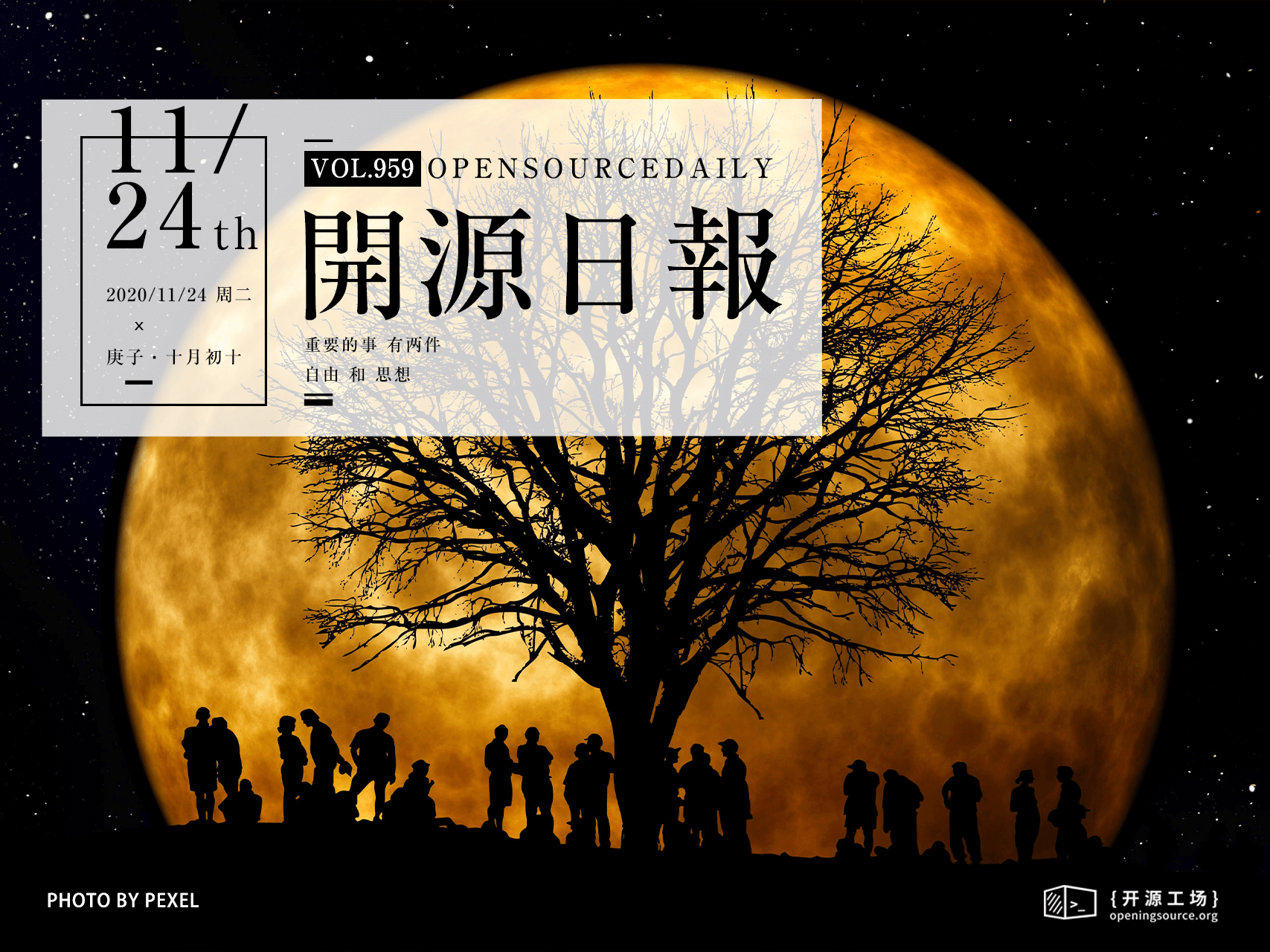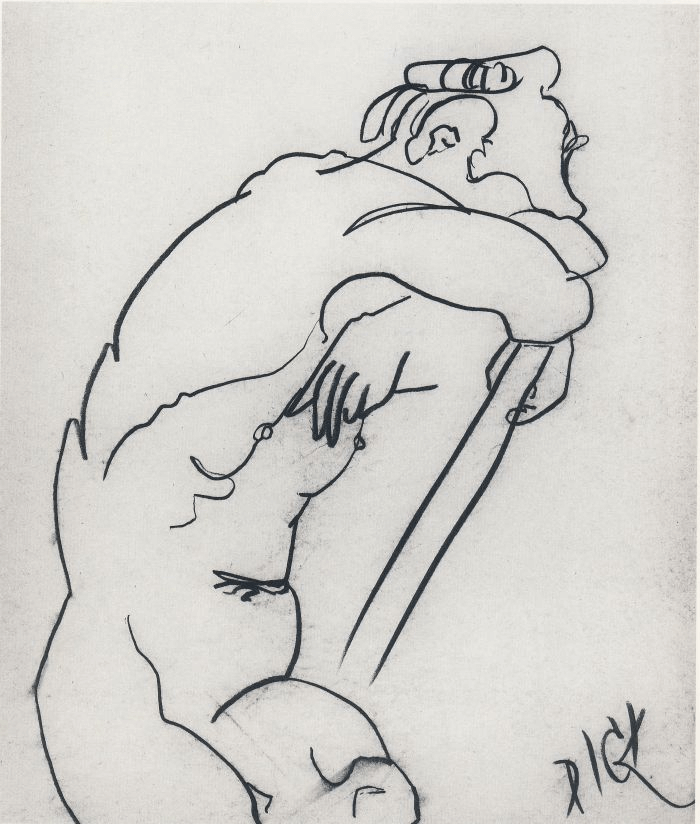今日推薦開源項目:《TrackersListCollection》
今日推薦英文原文:《How Richard Feynman Learned to Loosen Up》

今日推薦開源項目:《TrackersListCollection》傳送門:項目鏈接
推薦理由:在網盤的時代,BT 種子似乎已經成為「時代的眼淚」了。BT 全名 「BitTorrent」,是一種 P2P 傳輸協議,具體來講,通過 BT 下載的資源都是別人上傳得到的,其下載速度取決於其他用戶上傳同一資源的速度。所以,對於某個資源,上傳的人越多,下載速度就越快;如果沒有其他的用戶上傳,是無法下載資源的。
該項目長期記錄並更新 Tracker 伺服器的鏈接。Tracker 會追蹤有多少人在下載同一文件,並把這些名單發送到 BT 軟體上。BT 軟體再嘗試連接這些用戶,以此來給用戶提供下載速度。
今日推薦英文原文:《How Richard Feynman Learned to Loosen Up》作者:Herbert Lui
原文鏈接:https://medium.com/curious/how-richard-feynman-learned-to-loosen-up-9f3420afe26f
推薦理由:如果要畫一幅畫,但是全程不看畫紙會怎樣呢?顯而易見,對於普通人,肯定畫不好。但是正是由於這個「肯定畫不好」的想法,能讓人將重心從繪畫的結果轉移到繪畫的過程。如果有時能夠忘掉所謂「結果」,或許能帶來意想不到的啟發。
How Richard Feynman Learned to Loosen Up
「Life』s under no obligation to give us what we expect.」― Margaret Mitchell
In his book Surely You』re Joking, Mr. Feynman!, Nobel Prize-winning physicist Richard Feynman recalls an art class when he was told, repeatedly to 「loosen up.」 He writes, 「I figured that made no more sense than telling someone who』s just learning to drive to 『loosen up』 at the wheel. It isn』t going to work… I resisted this perennial loosen-up stuff.」Feynman was then instructed to draw without looking at the paper. He kept his eyes on the model, not looking at what he was doing with the pencil. The first time he did it, his pencil broke at the very beginning and he had nothing but impressions in his paper. The second time he did it, he was impressed with the results, noticing a 「funny, semi-Picasso like strength」 in his work.
Something clicked. Feynman realized that he knew that it would be impossible to draw well without looking at the paper, so he didn』t consciously try. He writes, 「I had thought that 『loosen up』 meant 『make sloppy drawings,』 but it really meant to relax and not worry about how the drawing is going to come out.」

(Image: Blind contour drawing by Richard Feynman/Museum Syndicate)
When expectations get in the way of results
Every day, we』re trained to do the opposite — to tighten up and control the results, like Feynman first tried to do. It』s got to have a performance indicator, or at least some indirect benefit to us in the future. We conduct our time transactionally, only putting some in if we』ll get something out. We need to re-learn how to do things without expecting results.Of course results matter — they put food on the table. And so, we set goals and create plans to get results. But here』s something we don』t often consider:
When we set goals, we also create expectations that get in the way of results.
Sometimes, we produce the best results when we remove the expectation of any outcome. Our conscious mind lets our unconscious mind take over. Think of the time you get a job offer after doing an interview without caring how it went, the time you were praised for your hack-y solution, or the time you swished a basketball with barely any aim.
If we want our creative work to thrive, we need to intentionally apply this effortlessness to it. And we start by doing things knowing a result might happen, but without expecting it.
Remember how to forget expectations
The myth we』re told is to get better every day. The challenge is the inevitable stumble — if we get worse one day, we are failures. These beliefs are all based on a flawed assumption: that progress is linear.At an extreme, this could lead us to chase perfection. If something isn』t absolutely perfect, we believe it』s not worth doing. But perfectionism creates an impossible standard for us to meet. This is just one of many reasons we start procrastinating and get blocked.
Think of the person whose goal in life is to write and release a masterpiece, but isn』t interested in publishing a blog post. The expectation is lodged in their head — they apply it to other people (「That book is shit!」), but also tragically their own work. It will be nearly impossible for that person to do the former without trying the latter. In reality, the only failure is to not try, out of fear of making something bad.
As Patagonia founder Yvon Chouinard writes, 「Identify the goal, then forget about it and concentrate in the process.」 Discard the expectations or the plan you』re going to achieve your goal with. Just focus on the process.
Make it impossible to do something perfectly
This is a suggestion that will inject a dosage of creativity to your life, and it takes less than a minute. I only want you to keep reading if you intend to do it. Feel free to duck out and circle back when you have more time:Today, take action on the thing you want to do. If you want to write, then write at least 20 words in a notebook. If you want to draw, sketch something out. If you want to make music, hum a melody into the voice memo in your phone and try to create it on an instrument or in your computer.
If you』re uncertain of what the thing you want to do is, then do the thing you think you want to do. Or do the thing you think your best friend thinks you want to do. Or write a list out and roll dice. It』s only by trying many things that you find the one you really like.
Try your best with what you have. Ideally, you will be able to finish your task in one minute. If you』re having fun, try it for five minutes, but you must stop by then. That short time makes it difficult to do anything well, like Feynman drawing without looking, so hopefully you will put that possibility out of your mind and focus on the process. There will be a time and place to care about results — but it』s not while you do the work.
If you have fun, you can always do it again tomorrow. And again, keep it short — make it impossible for yourself to make a masterpiece. 「Whatever it is you』re seeking won』t come in the form you』re expecting,」 Haruki Marukami writes. Keep your mind open to whatever the process offers.
下載開源日報APP:https://openingsource.org/2579/
加入我們:https://openingsource.org/about/join/
關注我們:https://openingsource.org/about/love/
